Themed collection PCCP Perspectives

Opportunities and challenges in energy and electron transfer of nanocluster based hybrid materials and their sensing applications
This feature article highlights the recent advances of luminescent metal nanoclusters (MNCs) for their potential applications in healthcare and energy-related materials because of their high photosensitivity, thermal stability, low toxicity, and biocompatibility.
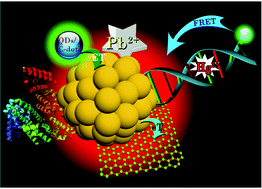
Phys. Chem. Chem. Phys., 2019,21, 5863-5881
https://doi.org/10.1039/C8CP06188B
Quantum approaches to vibrational dynamics and spectroscopy: is ease of interpretation sacrificed as rigor increases?
The subject of this Perspective is quantum approaches, beyond the harmonic approximation, to vibrational dynamics and IR spectroscopy.

Phys. Chem. Chem. Phys., 2019,21, 3397-3413
https://doi.org/10.1039/C8CP04990D
Thermochemistry of germanium and organogermanium compounds
This article reviews the current state of thermochemistry (enthalpies of formation) of germanium and organogermanium compounds.

Phys. Chem. Chem. Phys., 2019,21, 988-1008
https://doi.org/10.1039/C8CP06208K
Surface and interface design for heterogeneous catalysis
Recent progresses in catalytic nanocrystals with uniform and well-defined structures, in situ characterization techniques, and theoretical calculations are facilitating the innovation of efficient catalysts via surface and interface designs, including crystal phase design, morphology/facet design, and size design, followed by controlled synthesis.

Phys. Chem. Chem. Phys., 2019,21, 523-536
https://doi.org/10.1039/C8CP05717F
Coupled double triplet state in singlet fission
The highly unusual state, 1(TT), is a coupled, double triplet state that has recently garnered significant attention.

Phys. Chem. Chem. Phys., 2018,20, 30083-30094
https://doi.org/10.1039/C8CP06256K
Possible relations between supercooled and glassy confined water and amorphous bulk ice
A proposed relaxation scenario of bulk water based on studies of confined water and low density amorphous ice.
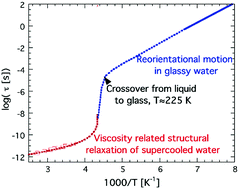
Phys. Chem. Chem. Phys., 2018,20, 30095-30103
https://doi.org/10.1039/C8CP05688A
A perspective on quantum mechanics and chemical concepts in describing noncovalent interactions
Since quantum mechanical calculations do not typically lend themselves to chemical interpretation, analyses of bonding interactions depend largely upon models (the octet rule, resonance theory, charge transfer, etc.). This sometimes leads to a blurring of the distinction between mathematical modelling and physical reality.

Phys. Chem. Chem. Phys., 2018,20, 30076-30082
https://doi.org/10.1039/C8CP06786D
Supersolidity of undercoordinated and hydrating water
Electrostatic polarization or molecular undercoordination endows the supersolidity by shortening and stiffening the H–O bond and lengthening and softening the O:H nonbond, deepening the O 1s energy level, and prolonging the photoelectron and phonon lifetime. The supersolid phase is less dense, viscoelastic, mechanically and thermally more stable, which offsets boundaries of structural phases and critical temperatures for phase transition of the coordination-resolved core–shell structured ice such as the ‘no man's land’ supercooling and superheating.

Phys. Chem. Chem. Phys., 2018,20, 30104-30119
https://doi.org/10.1039/C8CP06115G
Two dimensional boron nanosheets: synthesis, properties and applications
As a material generating increasing interest, boron nanosheets have been reviewed from the perspective of their synthesis, properties, application and possible research directions.
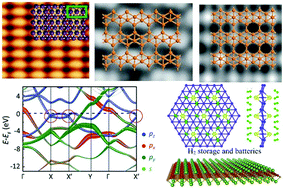
Phys. Chem. Chem. Phys., 2018,20, 28964-28978
https://doi.org/10.1039/C8CP04850A
Explicit vs. implicit electronic polarisation of environment of an embedded chromophore in frozen-density embedding theory
A comparison of strategies to account for environment polarisation in Frozen Density Embedding Theory (FDET).

Phys. Chem. Chem. Phys., 2018,20, 26053-26062
https://doi.org/10.1039/C8CP05634J
Towards the SMART workflow system for computational spectroscopy
Is it possible to convert highly specialized research in the field of computational spectroscopy into robust and user-friendly aids to experiments and industrial applications?
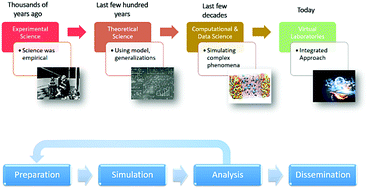
Phys. Chem. Chem. Phys., 2018,20, 26034-26052
https://doi.org/10.1039/C8CP03417F
Oil/water separation based on natural materials with super-wettability: recent advances
This review summarizes the recent developments of oil/water separation by natural superwetting materials, including the superwettability, separating method, and mechanism.

Phys. Chem. Chem. Phys., 2018,20, 25140-25163
https://doi.org/10.1039/C8CP04009E
Block copolymer self-assembly in ionic liquids
Recent developments in block copolymer self-assembly in ionic liquids are reviewed from both fundamental and applied aspects.

Phys. Chem. Chem. Phys., 2018,20, 25123-25139
https://doi.org/10.1039/C8CP04173C
Amide–imide tautomerization in the glutamine side chain in enzymatic and photochemical reactions in proteins
Amide–imide tautomerization in Gln is critical in the mechanisms of enzyme-catalyzed hydrolysis of GTP and light-induced activation of BLUF domains.

Phys. Chem. Chem. Phys., 2018,20, 23827-23836
https://doi.org/10.1039/C8CP04817G
Superatom chemistry: promising properties of near-spherical noble metal clusters
Atomic angular moments are nearly quenched in bonded structures, but superatoms in cylindrical environments develop molecular orbital moments.

Phys. Chem. Chem. Phys., 2018,20, 23812-23826
https://doi.org/10.1039/C8CP04651D
Solution-processed resistive switching memory devices based on hybrid organic–inorganic materials and composites
We review emerging low-cost solution-processed resistive random-access memory (ReRAM) made of either hybrid nanocomposites or hybrid organo-lead halide perovskites.
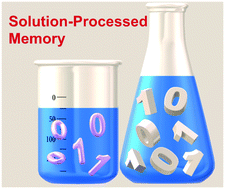
Phys. Chem. Chem. Phys., 2018,20, 23837-23846
https://doi.org/10.1039/C8CP03945C
The integration of experiment and computational modelling in heterogeneously catalysed ammonia synthesis over metal nitrides
The integration of experimental studies and computational modelling is a powerful approach for the enhanced understanding of ammonia synthesis mechanisms and for the design of new catalysts.

Phys. Chem. Chem. Phys., 2018,20, 21803-21808
https://doi.org/10.1039/C8CP04216K
The metal–ionic liquid interface as characterized by impedance spectroscopy and in situ scanning tunneling microscopy
Electrochemical measurements including impedance spectroscopy and in situ scanning tunneling microscopy were performed to study the interface between solid electrodes and ionic liquids. We could reveal that the double layer rearrangement processes are not instantaneous, but that the ions can form ordered clusters at the interface.

Phys. Chem. Chem. Phys., 2018,20, 21241-21250
https://doi.org/10.1039/C8CP02074D
Tracing feed-back driven exciton dynamics in molecular aggregates
Excitation, exciton transport, dephasing and energy relaxation, and finally detection processes shift molecular systems into a specific superposition of quantum states causing localization, local heating and finally excitonic polaronic effects.

Phys. Chem. Chem. Phys., 2018,20, 21225-21240
https://doi.org/10.1039/C8CP00682B
Changing relations between proteins and osmolytes: a choice of nature
The stabilization and destabilization of the protein in the presence of any additive is mainly attributed to its preferential exclusion from protein surface and its preferential binding to the protein surface, respectively.

Phys. Chem. Chem. Phys., 2018,20, 20315-20333
https://doi.org/10.1039/C8CP02949K
Photoinduced charge transfer by one and two-photon absorptions: physical mechanisms and applications
We review photoinduced charge transfer in organic solar cells without and with an external electric field and then we introduce the visualization methods of the transition density, charge difference density and transition density matrix for the analysis of the photoinduced charge transfer in a neutral system and a charged system excited by one-photon and two-photon absorption.
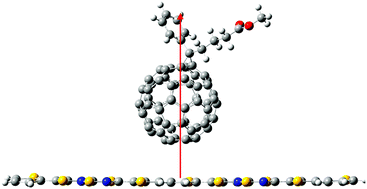
Phys. Chem. Chem. Phys., 2018,20, 19720-19743
https://doi.org/10.1039/C8CP03442G
What's in a name? ‘Coinage-metal’ non-covalent bonds and their definition
Isomorphism among angular geometries of halogen- and ‘coinage metal’-bonded complexes of water.

Phys. Chem. Chem. Phys., 2018,20, 19332-19338
https://doi.org/10.1039/C8CP03432J
Is a cross-β-sheet structure of low molecular weight peptides necessary for the formation of fibrils and peptide hydrogels?
Using both theory and experiment, we identify two oligomer structures formed by tripeptides in aqueous solutions.

Phys. Chem. Chem. Phys., 2018,20, 18158-18168
https://doi.org/10.1039/C8CP00691A
Hydrogen bond network structures of protonated short-chain alcohol clusters
Protonated alcohol clusters enable extraction of the physical essence of the nature of hydrogen bond networks.

Phys. Chem. Chem. Phys., 2018,20, 14971-14991
https://doi.org/10.1039/C7CP08072G
Understanding the ionic conductivity maximum in doped ceria: trapping and blocking
Ionic conductivity is systematically predicted by only a few migration energies from first-principles DFT calculations combined with Kinetic Monte Carlo simulations.

Phys. Chem. Chem. Phys., 2018,20, 14291-14321
https://doi.org/10.1039/C7CP08535D
Spectral and energy transfer in Bi3+–Ren+ (n = 2, 3, 4) co-doped phosphors: extended optical applications
Bismuth with [Xe]4f145d106s26p3 electronic configuration is considered as ‘a wonder metal’ due to its diverse oxidation states and multi-type electronic structures.

Phys. Chem. Chem. Phys., 2018,20, 11516-11541
https://doi.org/10.1039/C8CP00433A
Design and properties of functional zwitterions derived from ionic liquids
Component cation and anion of ionic liquid are covalently tethered to prepare functional zwitterion.

Phys. Chem. Chem. Phys., 2018,20, 10978-10991
https://doi.org/10.1039/C7CP08592C
Multi-fuel surrogate chemical kinetic mechanisms for real world applications
The most important driving force for development of detailed chemical kinetic reaction mechanisms in combustion is the desire by researchers to simulate practical systems.

Phys. Chem. Chem. Phys., 2018,20, 10588-10606
https://doi.org/10.1039/C7CP07901J
How nature covers its bases
The response of nucleobases to UV radiation depends on structure in subtle ways, as revealed by gas-phase experiments.
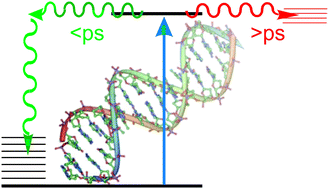
Phys. Chem. Chem. Phys., 2018,20, 9701-9716
https://doi.org/10.1039/C8CP01236A
Influence of additives on thermoresponsive polymers in aqueous media: a case study of poly(N-isopropylacrylamide)
Thermoresponsive polymers (TRPs) in different solvent media have been studied over a long period and are important from both scientific and technical points of view.

Phys. Chem. Chem. Phys., 2018,20, 9717-9744
https://doi.org/10.1039/C7CP08172C
On the prediction of core level binding energies in molecules, surfaces and solids
Core level binding energies, measured by X-ray photoelectron spectroscopy providing unique information regarding the chemical environment of atoms in a system, can be estimated by a diversity of state-of-the-art accurate methods here detailed.

Phys. Chem. Chem. Phys., 2018,20, 8403-8410
https://doi.org/10.1039/C7CP08503F
Necessary and sufficient conditions for the successful three-phase photocatalytic reduction of CO2 by H2O over heterogeneous photocatalysts
Artificial photosynthesis has recently drawn an increasing amount of attention due to the fact that it allows for direct solar-to-chemical energy conversion.

Phys. Chem. Chem. Phys., 2018,20, 8423-8431
https://doi.org/10.1039/C7CP07783A
New tricks for old dogs: improving the accuracy of biomolecular force fields by pair-specific corrections to non-bonded interactions
Recent advances in parallel computing have pushed all-atom molecular dynamics simulations into an untested territory. This article reviews the applications of the NBFIX approach for testing and improving molecular dynamics force fields and discuses the implications of the NBFIX corrections for simulations of various biomolecular systems.

Phys. Chem. Chem. Phys., 2018,20, 8432-8449
https://doi.org/10.1039/C7CP08185E
Mechanisms ruling the partition of solutes in ionic-liquid-based aqueous biphasic systems – the multiple effects of ionic liquids
The partition of solutes in ionic-liquid-based aqueous biphasic systems is due a multiple effect resulting from both solute–solvent and specific solute–ionic-liquid interactions.

Phys. Chem. Chem. Phys., 2018,20, 8411-8422
https://doi.org/10.1039/C8CP00383A
Thermal, electrochemical and radiolytic stabilities of ionic liquids
Ionic liquids show instability when exposed to high temperature, to high voltage as electrolytes, or under irradiation.
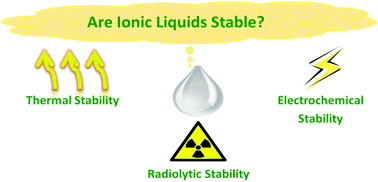
Phys. Chem. Chem. Phys., 2018,20, 8382-8402
https://doi.org/10.1039/C7CP07483B
Harnessing complexity in molecular self-assembly using computer simulations
Computer simulations offer a powerful strategy to explore self-assembly with atomic resolution. Here, we review recent computational studies focusing on both thermodynamic and kinetic aspects.

Phys. Chem. Chem. Phys., 2018,20, 6767-6776
https://doi.org/10.1039/C7CP06181A
Nanocatalysts for hydrogen evolution reactions
Hydrogen fuel is among the cleanest renewable resources and is the best alternative to fossil fuels for the future.

Phys. Chem. Chem. Phys., 2018,20, 6777-6799
https://doi.org/10.1039/C7CP06316D
Three-dimensional porous graphene networks expand graphene-based electronic device applications
In recent years, there has been increasing demand for 3D porous graphene structures with excellent 2D characteristics for developing attractive graphene device applications.
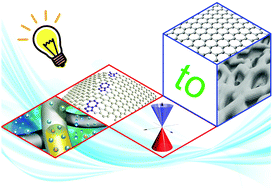
Phys. Chem. Chem. Phys., 2018,20, 6024-6033
https://doi.org/10.1039/C7CP07667C
Molecular cocrystals: design, charge-transfer and optoelectronic functionality
This perspective article primarily focuses on the research work related to optoelectronic properties of organic charge transfer cocrystals.

Phys. Chem. Chem. Phys., 2018,20, 6009-6023
https://doi.org/10.1039/C7CP07167A
Spectroscopy of prospective interstellar ions and radicals isolated in para-hydrogen matrices
The p-H2 matrix-isolation technique coupled with photolysis in situ or electron bombardment produces protonated or hydrogenated species important in astrochemistry.
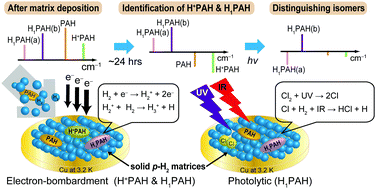
Phys. Chem. Chem. Phys., 2018,20, 5344-5358
https://doi.org/10.1039/C7CP05680J
Multiscale methods framework: self-consistent coupling of molecular theory of solvation with quantum chemistry, molecular simulations, and dissipative particle dynamics
In this work, we will address different aspects of self-consistent field coupling of computational chemistry methods at different time and length scales in modern materials and biomolecular science.

Phys. Chem. Chem. Phys., 2018,20, 2947-2969
https://doi.org/10.1039/C7CP05585D
Field-, strain- and light-induced superconductivity in organic strongly correlated electron systems
In this perspective, our recent progress in the development of novel SC organic FETs was reviewed, in which organic strongly correlated electron materials were utilised as channel materials.

Phys. Chem. Chem. Phys., 2018,20, 1321-1331
https://doi.org/10.1039/C7CP06716J
The next generation vanadium flow batteries with high power density – a perspective
The development and perspectives of vanadium flow batteries with high power density are reviewed and summarized.

Phys. Chem. Chem. Phys., 2018,20, 23-35
https://doi.org/10.1039/C7CP07456E
The σ-hole revisited
A covalently-bonded atom typically has a region of lower electronic density, a “σ-hole,” on the side of the atom opposite to the bond, approximately along its extension. There is often a positive electrostatic potential (strongest shown in red) associated with a σ-hole, although it may deviate from the extension of the bond.

Phys. Chem. Chem. Phys., 2017,19, 32166-32178
https://doi.org/10.1039/C7CP06793C
Steering on-surface reactions with self-assembly strategy
A general picture illustrating three main effects of the self-assembly strategy on steering surface reactions.
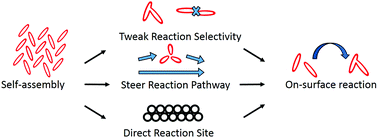
Phys. Chem. Chem. Phys., 2017,19, 31531-31539
https://doi.org/10.1039/C7CP06177C
The generalized maximum hardness principle revisited and applied to solids (Part 2)
Part 2 of this duology is devoted to extended solids, polymorphism and phase diagrams, to which we apply the generalized maximum hardness principle. We illustrate the applicability of the principle to a broad range of phenomena and distinct systems and propose its reformulation.

Phys. Chem. Chem. Phys., 2017,19, 30984-31006
https://doi.org/10.1039/C7CP05027E
The generalized maximum hardness principle revisited and applied to atoms and molecules
Part 1 of this duology is devoted to isolated atoms and molecules, and to chemical reactions between them; we introduce here basic concepts beyond the Generalized Maximum Hardness Principle, and the corresponding Minimum Polarizability Principle, and we illustrate applicability of both principles to a broad range of chemical phenomena and distinct systems in the gas phase.
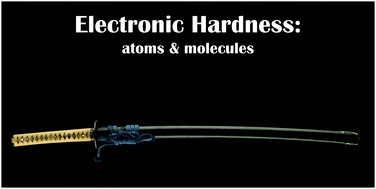
Phys. Chem. Chem. Phys., 2017,19, 30964-30983
https://doi.org/10.1039/C7CP03101G
Plasmon lasers: coherent nanoscopic light sources
Plasmon lasers are a new class of coherent light sources that use metals for light localization and amplification.
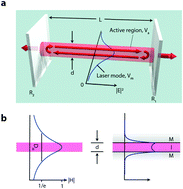
Phys. Chem. Chem. Phys., 2017,19, 29731-29741
https://doi.org/10.1039/C7CP06780A
Hydrogen bonds, and σ-hole and π-hole bonds – mechanisms protecting doublet and octet electron structures
For various interactions electron charge shifts try to protect the former doublet or octet electronic structure of the Lewis acid centre.
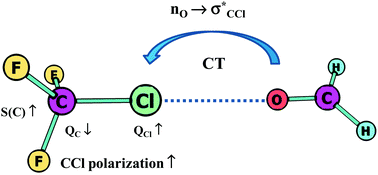
Phys. Chem. Chem. Phys., 2017,19, 29742-29759
https://doi.org/10.1039/C7CP06393H
Real-time fluorescence quenching-based detection of nitro-containing explosive vapours: what are the key processes?
We present a holistic perspective on real-time sensing via fluorescence quenching and identify the key processes behind the response.

Phys. Chem. Chem. Phys., 2017,19, 29714-29730
https://doi.org/10.1039/C7CP04602B
Curly arrows, electron flow, and reaction mechanisms from the perspective of the bonding evolution theory
The BET study provides the nature of the reaction mechanism by finding the electronic flow processes along the reaction progress.

Phys. Chem. Chem. Phys., 2017,19, 29031-29046
https://doi.org/10.1039/C7CP06108K
Dynamics theory for molecular liquids based on an interaction site model
Dynamics theories for molecular liquids based on an interaction site model have been developed over the past few decades and proved to be powerful tools to investigate various dynamical phenomena.
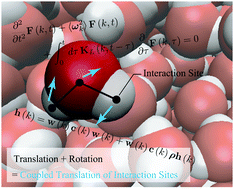
Phys. Chem. Chem. Phys., 2017,19, 27917-27929
https://doi.org/10.1039/C7CP05423H
Long-lived luminescence of silicon nanocrystals: from principles to applications
Understanding parameters affecting the luminescence of silicon nanocrystals will guide the design of improved systems for a plethora of applications.
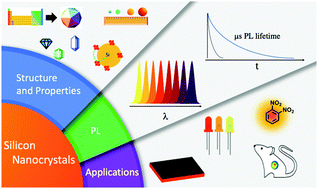
Phys. Chem. Chem. Phys., 2017,19, 26507-26526
https://doi.org/10.1039/C7CP05208A
Recent research progress in non-aqueous potassium-ion batteries
The recent research progress in non-aqueous potassium-ion batteries is summarized and the challenges and future research opportunities are briefly discussed.
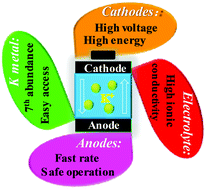
Phys. Chem. Chem. Phys., 2017,19, 26495-26506
https://doi.org/10.1039/C7CP03852F
Catalytic CVD synthesis of boron nitride and carbon nanomaterials – synergies between experiment and theory
We present a perspective demonstrating the importance of synergy between experiment and theory for modern nanomaterial synthesis.

Phys. Chem. Chem. Phys., 2017,19, 26466-26494
https://doi.org/10.1039/C7CP03835F
Dichotomy between the band and hopping transport in organic crystals: insights from experiments
The molecular understanding of charge-transport in organic crystals has often been tangled with identifying the true dynamical origin.

Phys. Chem. Chem. Phys., 2017,19, 25819-25828
https://doi.org/10.1039/C7CP05297A
The hydrophobic force for bubble–particle attachment in flotation – a brief review
Both exponential decay and power decay laws could be employed to quantitatively describe the hydrophobic force between bubble and particle.

Phys. Chem. Chem. Phys., 2017,19, 24421-24435
https://doi.org/10.1039/C7CP03856A
Unveiling universal trends for the energy level alignment in organic/oxide interfaces
Organic/oxide interfaces exhibit an energy-level-alignment universal behaviour when a bias is applied. Coulomb-blockade regime is ruled by the organic electronegativity.

Phys. Chem. Chem. Phys., 2017,19, 24412-24420
https://doi.org/10.1039/C7CP03853D
Quantitative probing of subtle interactions among H-bonds in alpha hydroxy carboxylic acid complexes
The alpha OH stretching frequency may be affected upon complexing with water and formic acid.

Phys. Chem. Chem. Phys., 2017,19, 24399-24411
https://doi.org/10.1039/C7CP03917D
SAXS on a chip: from dynamics of phase transitions to alignment phenomena at interfaces studied with microfluidic devices
Microfluidic devices allow actuation on the microscale, while in situ SAXS allows visualization of these effects in relevant systems.

Phys. Chem. Chem. Phys., 2017,19, 23690-23703
https://doi.org/10.1039/C7CP02736B
Synergies in lubrication
In living organisms the aqueous medium is used for providing low friction forces. This is achieved by synergistic actions of different biomolecules that together accomplish a high load bearing capacity and sustain an easily sheared water layer.
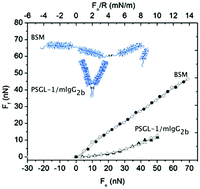
Phys. Chem. Chem. Phys., 2017,19, 23677-23689
https://doi.org/10.1039/C7CP03517A
Electrosorption at functional interfaces: from molecular-level interactions to electrochemical cell design
This perspective discusses the fundamental processes behind electrosorption at charged interfaces, and highlights advances in electrode design for sustainable technologies in water purification and ion-selective separations.

Phys. Chem. Chem. Phys., 2017,19, 23570-23584
https://doi.org/10.1039/C7CP02822A
Solid surface vs. liquid surface: nanoarchitectonics, molecular machines, and DNA origami
Comparisons of science and technology between these solid and liquid surfaces would be a good navigation for current-to-future developments.
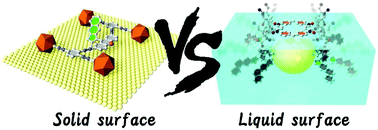
Phys. Chem. Chem. Phys., 2017,19, 23658-23676
https://doi.org/10.1039/C7CP02280H
The relevance of structural features of cellulose and its interactions to dissolution, regeneration, gelation and plasticization phenomena
The interactions and structural properties of cellulose influence different phenomena.

Phys. Chem. Chem. Phys., 2017,19, 23704-23718
https://doi.org/10.1039/C7CP02409F
Self-thermophoretic motion of controlled assembled micro-/nanomotors
Controlled assembled micro-/nanomotors are driven in fluid by near infrared light. The behaviour and mechanism of self-thermophoretic motion are reviewed.

Phys. Chem. Chem. Phys., 2017,19, 23606-23613
https://doi.org/10.1039/C7CP02561K
From force curves to surface nanomechanical properties
Surface science, which spans the fields of chemistry, physics, biology and materials science, requires information to be obtained on the local properties and property variations across a surface.

Phys. Chem. Chem. Phys., 2017,19, 23642-23657
https://doi.org/10.1039/C7CP02612A
Colloidal diffusion in confined geometries
Colloidal diffusion in confined geometries is analysed at the level of anisotropic pair densities.

Phys. Chem. Chem. Phys., 2017,19, 23632-23641
https://doi.org/10.1039/C7CP02497E
Unifying hydrotropy under Gibbs phase rule
A rational approach, aiming at constructing a unified theory of hydrotropy, will be presented based upon the first principles of statistical thermodynamics.
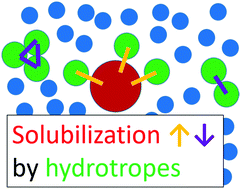
Phys. Chem. Chem. Phys., 2017,19, 23597-23605
https://doi.org/10.1039/C7CP02132A
Multiscale simulations for understanding the evolution and mechanism of hierarchical peptide self-assembly
Multiscale molecular simulations that combine and systematically link several hierarchies can provide insights into the evolution and dynamics of hierarchical peptide self-assembly from the molecular level to the mesoscale.

Phys. Chem. Chem. Phys., 2017,19, 23614-23631
https://doi.org/10.1039/C7CP01923H
Near-infrared photochemistry at interfaces based on upconverting nanoparticles
We review near-infrared photochemistry at interfaces based on upconverting nanoparticles, highlight its potential applications, and discuss the challenges.

Phys. Chem. Chem. Phys., 2017,19, 23585-23596
https://doi.org/10.1039/C7CP01838J
About this collection
Welcome to our online collection of PCCP Perspective articles. Here we feature PCCP Perspective articles published in the last three years.
Perspectives are high profile articles that present an authoritative state-of-the-art account of the selected research field. PCCP Perspectives take a wide variety of forms including personal accounts of research, critical analyses of topics of current interest and essential introductions to a field.
Congratulations to all the authors whose articles are featured and we hope readers enjoy this collection.